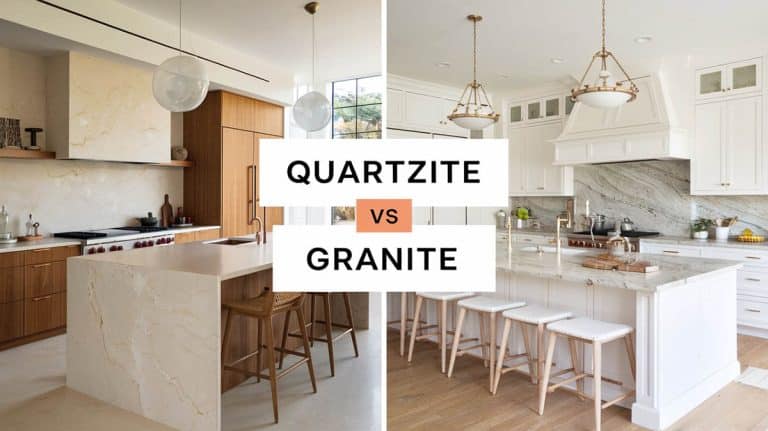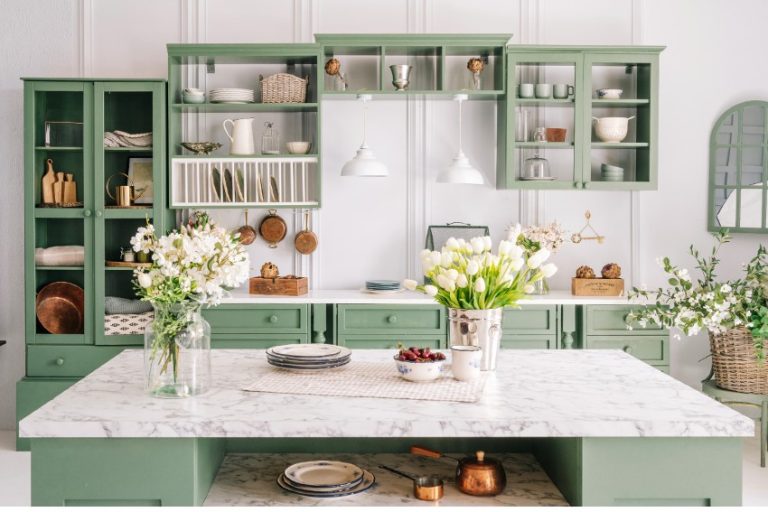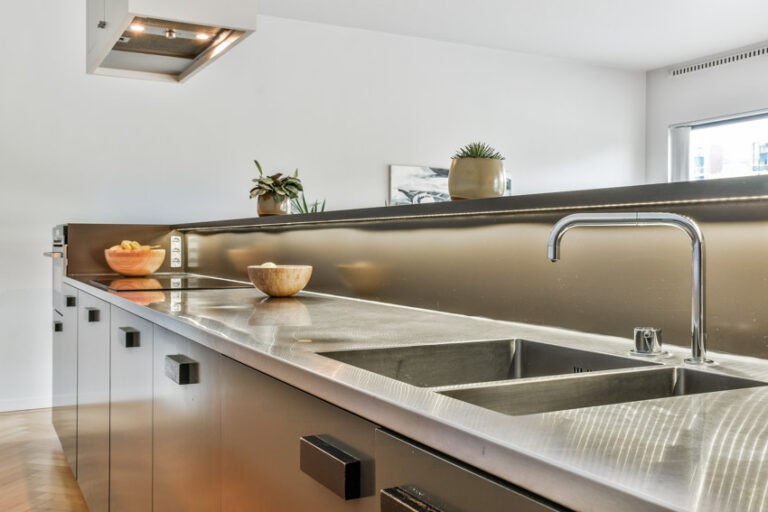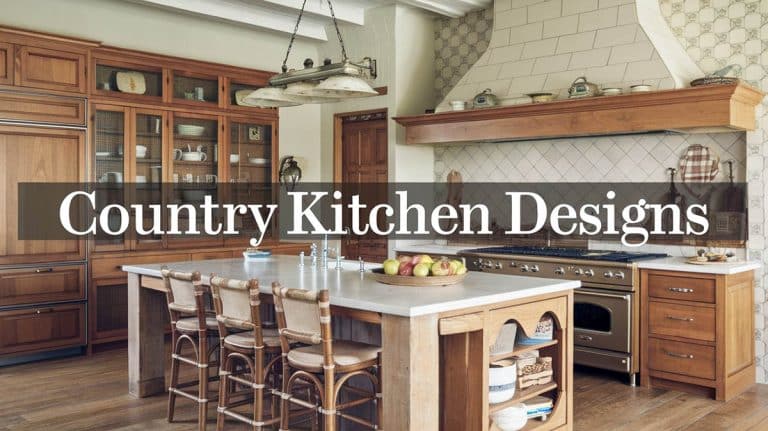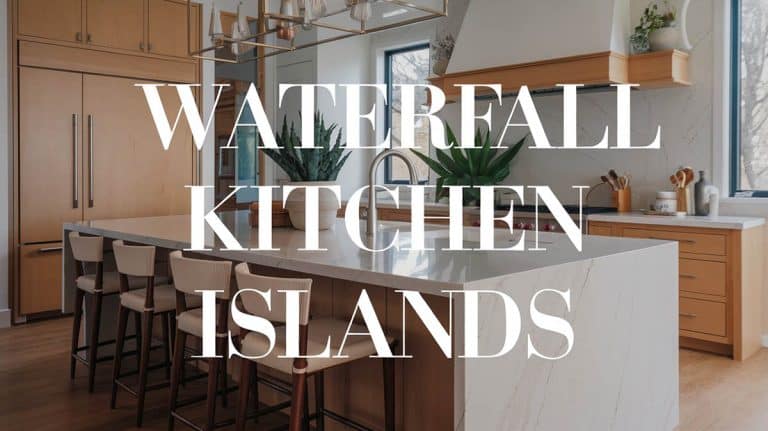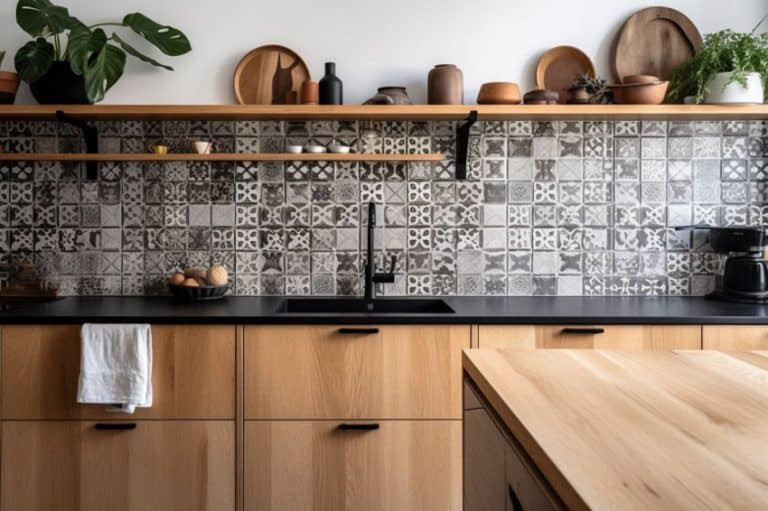Marble Kitchen Floor Tiles (Pros & Cons)
Here’s our guide to the best marble kitchen floor tiles, including their pros and cons, cost, and design ideas to help improve the overall aesthetic of your kitchen.
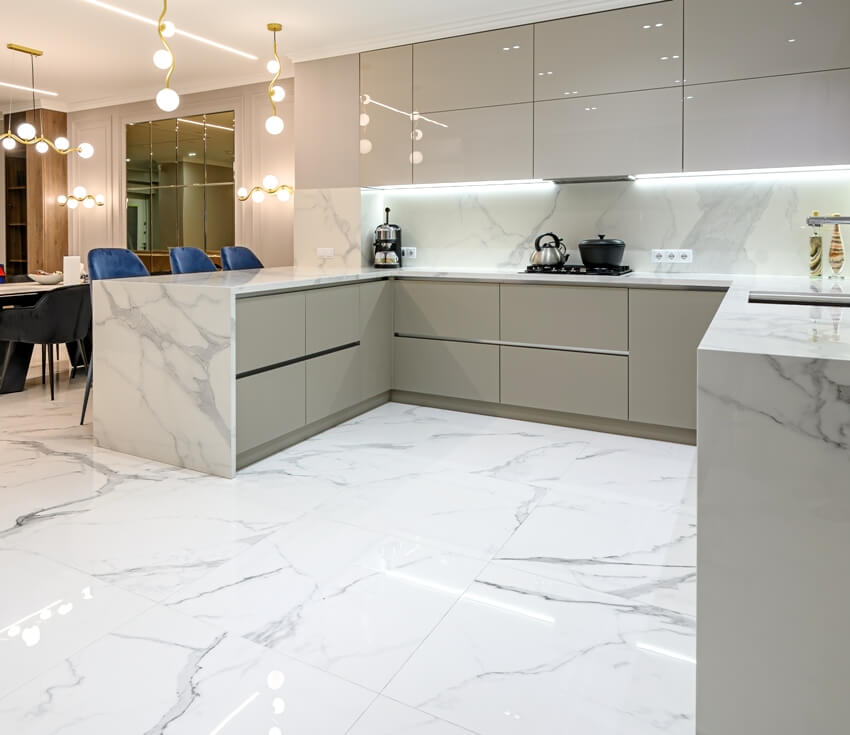
Marble is one of the best natural stone types because of its high durability, hardness, ease of cleaning, sleek shine, classiness, and elegant appeal to the culinary space. It is a versatile natural stone since it can be applied in your kitchen as floor tiles, wall tiles, and countertops because its resistance, cracking, and breaking strength are higher than other stones.
Marble flooring offers more flexibility in its application to your kitchen than simply giving it a particular aesthetic appeal. Below are some inherent benefits of using marble flooring in your kitchen.
Marble Floors Pros and Cons
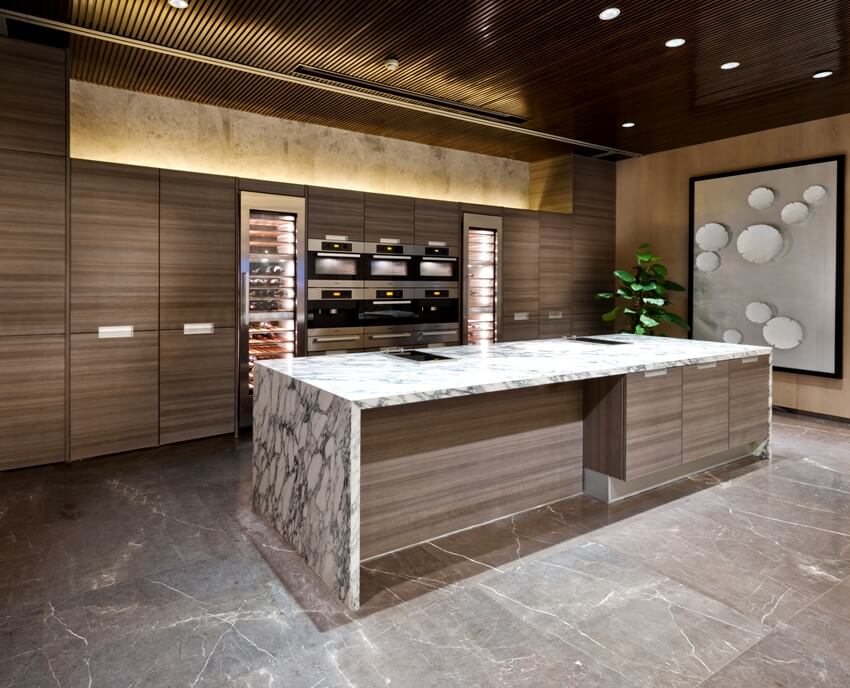
Here’s our marble kitchen floor tiles pros and cons beginning with the pros:
Marble Pros
• Attractive kitchen flooring – Marble has beautiful, unique design patterns and colorful hues. One of the most significant benefits of using it for flooring in the kitchen is its timeless beauty, versatility, and increased home value.
• Durable – High durability and hardness are the important factors for homeowners to choose marble over any other natural stone. Its stability and strength can handle a wide range of pressure of foot traffic and other constant loading and unloading. There is a wide range of applications due to its toughness, one quality that makes it unique.
• Enhance the Natural Beauty of Stone – A polished marble offers a smooth, shiny surface that brings out natural beauty, making kitchen floors more appealing. Polishing of these stone floors offers added protection against stains and other related damages due to moisture and wetness.
• Reflective – The stone surface has a little translucent characteristic, allowing light to go through and the surface to shine and illuminate beautifully.
• Natural Material – For those who have a liking for an eco-friendly lifestyle, opting to install this flooring in the kitchen can be a great advantage due to it being an all-natural material and having eco-friendly quality since it can be recycled, and it does not cause any environmental pollution at all.
• Elegant Flooring Choice – There is a sense of affluence attached to choosing this flooring, and it adds a sense of finesse to a kitchen by giving the interiors unique features.
On the other hand, thisflooring also has several disadvantages, which you need to know before deciding whether it would suit your kitchen flooring option.
Marble Cons
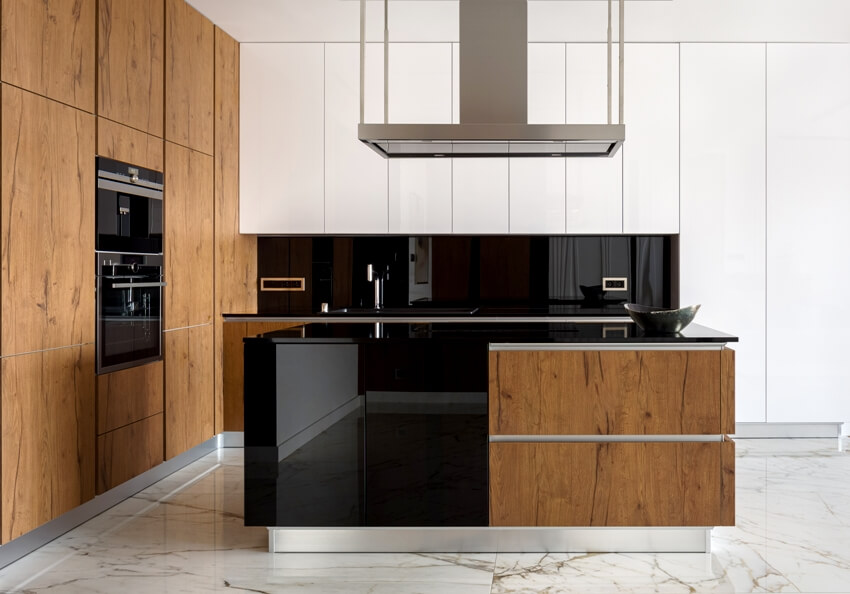
• Costly – Marble is an expensive material compared to other natural stones. The cost can increase when choosing designer mosaics, non-standard sizes, or larger tiles and slabs.
• Extra Care Required – It is a soft stone, so there’s a high chance that it can get scratched, cracked, and chipped very easily compared to other natural stone flooring materials.
• Can Be Stained – Because of its porous nature, it is also susceptible to staining. Suppose you are using furniture with more iron content. In that case, we don’t recommend you use this stone for your flooring because it becomes yellowish after absorbing iron for a long period of time.
• Spills Must Be Cleaned Quickly – Due to their alkaline composition, they are also likely to get stained in case of spillage from any acidic substance.
• Challenging to Fix – Repairing scratched or stained stone flooring can be difficult. However, you can protect your flooring from staining and being scratched by sealing and polishing it.
• Needs Skilled Installation – Labor cost is high as the material is very time-consuming, and installation requires skilled labor.
• May Be Slippery – When its surface has been polished, it tends to become slippery, so if your kitchen is often wet, it becomes a safety hazard for accidental falls.
Which Marble Is Best For Flooring?
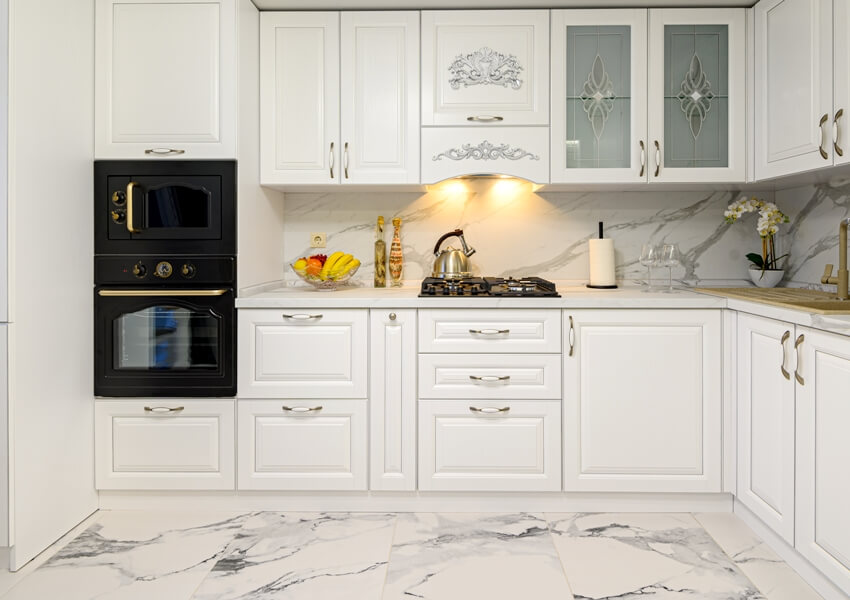
Most locally manufactured marble is imported from China, India, Iran, Turkey, Italy, Spain, Brazil, Egypt, Portugal, and Greece. Here are some of the best types used in residential homes:
Carrara is the most common Italian type of marble and one of the most popular types of stone used in flooring applications. This type has a grayish-white background with soft, feathery gray veining.
Calacatta is the most luxurious and expensive marble available in the US market due to its rarity since it only comes from specific quarries in the Carrara region of Italy.
This type has much darker, thick veining patterns over a bright white field background. Calacatta marble ranges from gold to brown to beige to dark gray for its background color.
Statuary comes from the same Carrara region in Italy. This type has a more translucent white background but less color variation than Calacatta.
The veins of Statuary marble have more dramatic veining, usually in a dark gray hue. This gives it a more luxurious feeling because this stone has a lot of contrast between light and dark.
Emperador is best described as robust and vigorous stone being quarried in Spain, and its field background comes in various shades of brown with defined white feathery veins.
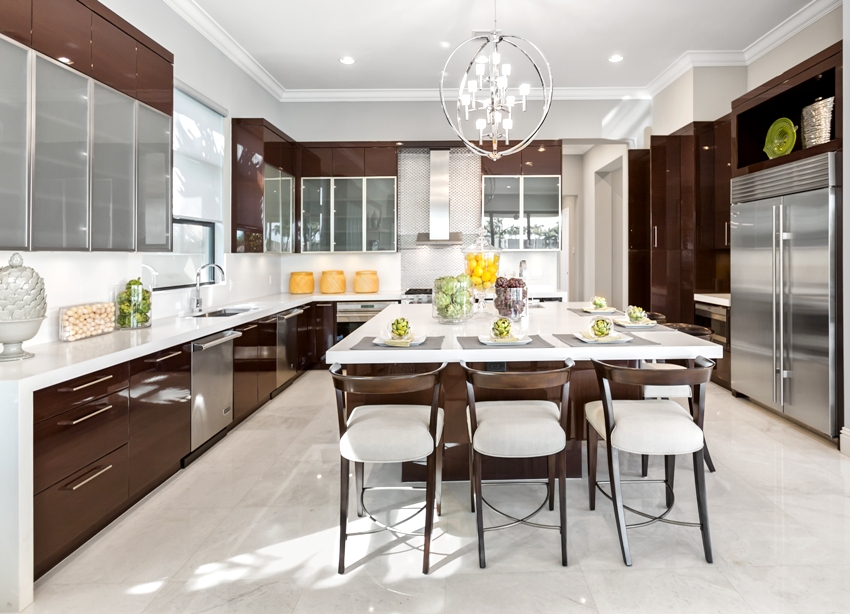
Crema marfil originates from Mount Coto, Spain; this type is, in fact, a limestone. It usually has a textured creamy beige stone with soft veins. The most common colors include subtle tones of yellow, cinnamon, white, and even goldish beige.
Talathello is from Turkey, also known for its silver-beige surface characteristics. It has a light grey background with silver or beige vein speckles deposits that are lighter than the background.
Levadia black is a very striking, superb, and polished black marble from Greece. It has countless, swirling smoke-like light gray veining. This type is not often used for floors but makes a very striking statement and can even have a surprisingly calming effect.
How Much Does Marble Flooring Cost?
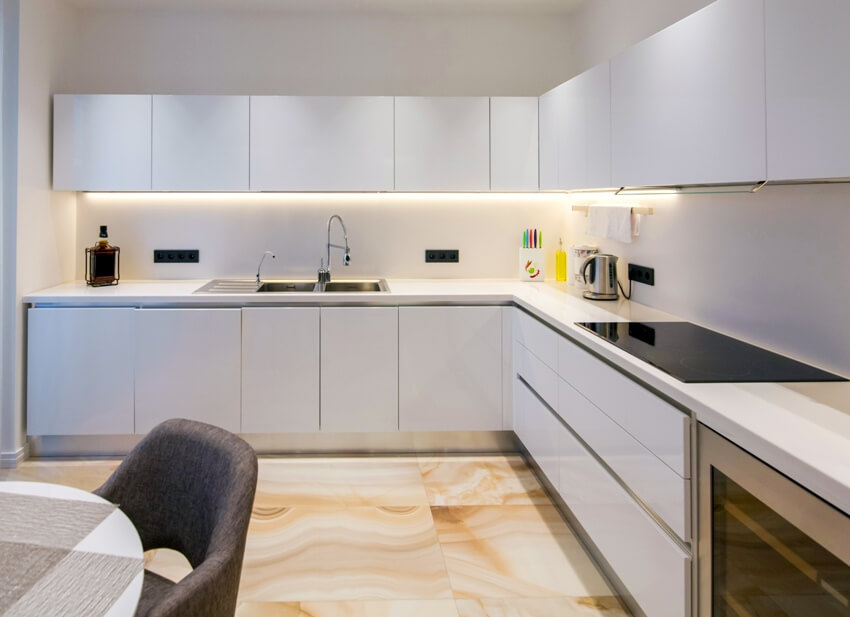
Marble, generally, is in the high-end range of all-natural stone, being one of the top architectural elements; these floorings are priced accordingly.
Typically, marble costs $10 to $20 per square foot for the material alone, plus an additional $3 to $7 per square foot for labor installation by a professional. Installation will cost more for complicated layouts or designs that require a lot of cutting, such as mosaics, motifs, and borders.
These types of patterns that include a horizontal, vertical, or diagonal installation can also affect that price. Other factors that can cause price differences include the marble’s grade, size, shape, thickness, and finish.
Some tiles run as high as $40 per square foot. Specialty imported stones such as Carrara cost $75 to $100 a square foot without installation since it is the best-priced, being less high-end and the most common type.
Calacatta and Statuary marble cost as much as $250 a square foot since it’s rarer, more popular, and a more sought-after type. See our best kitchen floor ideas on a budget here.
Marble Tile Floor Design Patterns
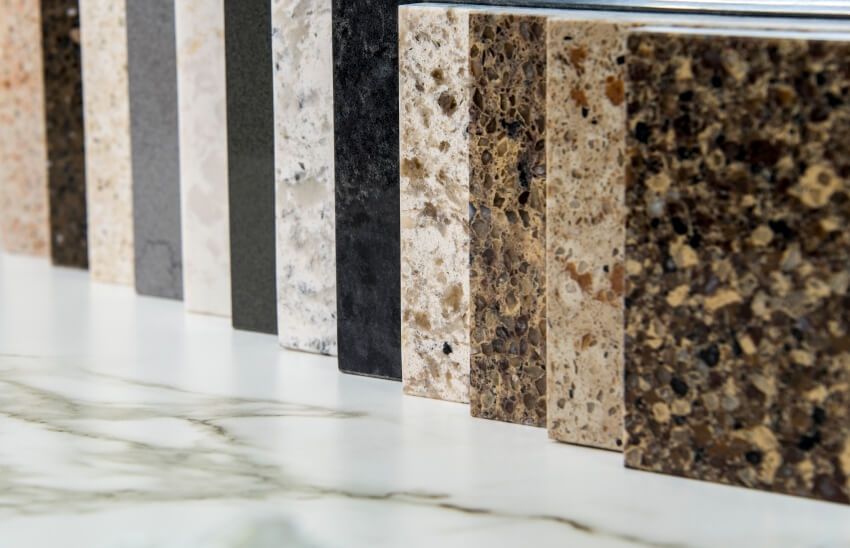
Marble floor design has a variety of choices since it is most customizable. Design options include herringbone, brick, regular, repeating, borders, motifs, mosaics, or medallions. Check our guide to marble flooring for more designs.
Regular Pattern
This is the most basic pattern for a floor design. Larger pieces of the stone are laid horizontally, creating a more open feeling.
We suggest using this pattern or design when space is busier, and you want to add order by making a simpler design pattern on your kitchen flooring.
Repeating Pattern

As the name suggests, this design floor pattern can be done creatively by laying different tiles on every other piece or every two pieces in a repetitive format.
Herringbone Pattern
This is an arrangement of rectangle or parallelogram shaped blocks meant to resemble the bones of a herring fish. Usually, this can be done in the same color stones or by switching between rows.
Bordering
This is a type of design that can be incorporated with any of the other design patterns. Borders are usually created using a different shape or color piece of tile around the pattern’s outside, giving the kitchen flooring a more defined look.
White Marble Floor
Marble floors are always unique and are timelessly attractive. The stone adds value to your property because it is expensive and should be maintained well.
Using marble on kitchen floors will improve your kitchen’s overall upscale and create an elegant space.
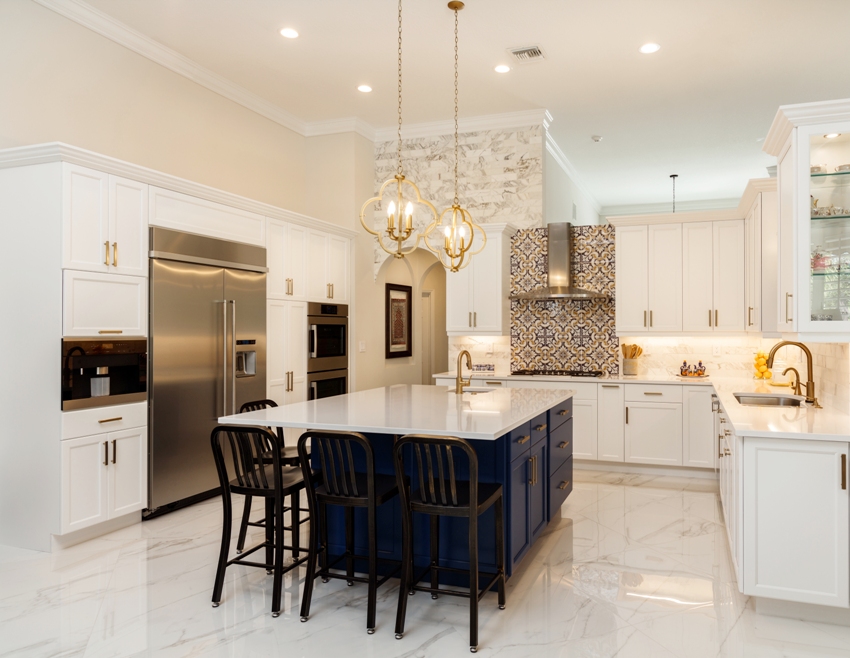
White marble floors have been popularly used in kitchens for a long time. Incorporating white natural stone floors in the kitchen has been an aspect of many design periods. It has proven and offer aesthetic appeal, timelessness, and adaptability, bringing classic elegance to any kitchen and creating a more luxurious design scheme.
White stones, like Carrara, create a sense of old-world magnificence when used in kitchen flooring. It makes the kitchen appear bigger and brighter as it deflects sunlight beautifully. The soft vein pattern of Carrara goes well with any kitchen design because the color and pattern blend well with the clean aesthetic of the space.
White marble is so versatile that it can be paired with many other kitchen finishes to add depth and dimension to the space. White tile flooring in the kitchen allows you to pair it with wood or antiqued finish cabinetry in white, combined with a white salt & pepper granite countertop.
The kitchen also has a welcoming and cozy feel, with this white stone and light beige veins that give the space a softer, warm tone. Read more about the different types of kitchen floor tiles here.
Black Marble Tiles
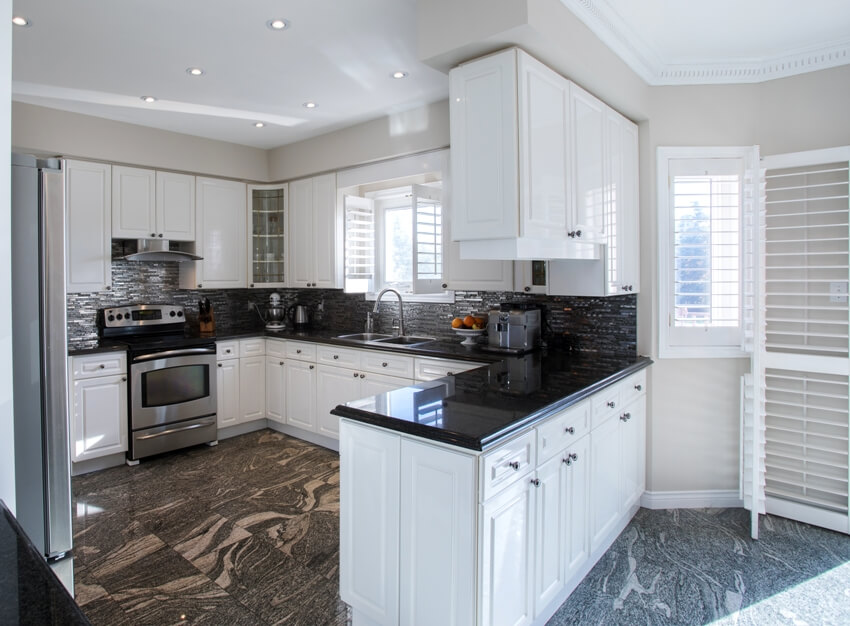
Black marble floors can easily become a focal point in the kitchen because of their cool, rich, and distinguished look. Black stone flooring is a great choice for a modern, sleek, and contemporary kitchen upgrade.
It is essential in creating an exceptional ambiance that offers sophistication and a perfect amount of mystery to your kitchen. Black veined stone floors offer drama and timeless beauty to your kitchen, especially when opting for a monochrome color palette.
By installing these black stone floors, you have an excellent groundwork for experimenting with textures and structures that can be fashionable and provide a timeless elegance in flooring design. Integrating marble flooring in the kitchen can instantly elevate the sophisticated vibe of your kitchen and will make a statement.
Visit our guide to the most popular kitchen flooring ideas to see more kitchen floor designs.

